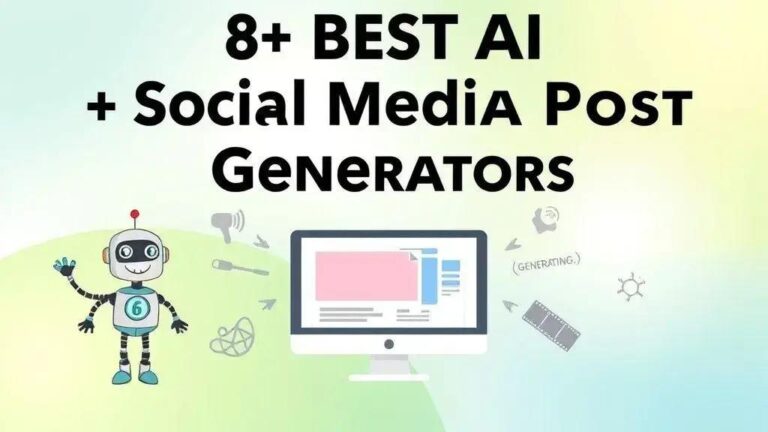AI visibility is crucial for modern websites and brands, determining how effectively their content is found and understood by artificial intelligence systems, including search engines, voice assistants, and generative AI. By optimizing for AI, sites can achieve direct answers in search results, boost brand awareness, improve rankings, and build trust. Key strategies to enhance AI visibility involve creating high-quality, natural language content, implementing structured data, ensuring excellent user experience, demonstrating expertise (E-A-T), and regularly monitoring performance with tools like Google Search Console.
AI visibility is becoming increasingly essential for website owners who want to thrive in today’s competitive digital landscape. As AI technologies evolve, understanding how to optimize your website for visibility in AI-generated responses is crucial. This article explores the significance of AI visibility, how it influences your site’s traffic, and practical strategies for enhancing your presence in search results. Are you ready to learn how AI can transform your online strategy? Let’s dive in!
Understanding AI Visibility
AI visibility is a big deal for your website today. It means how well your site shows up when people use artificial intelligence to find things online. Think about it: when you ask a smart speaker a question, or when Google gives you a direct answer, that’s AI at work. Your website needs to be seen by these AI systems to get noticed. It’s not just about showing up in a list of links anymore. It’s about being the answer itself.
So, what exactly does AI visibility mean for your website? It’s about making sure AI tools can easily understand and use your content. This includes search engines like Google, which use advanced AI to figure out what users really want. It also covers voice assistants like Siri and Alexa. And now, it includes new generative AI models, like ChatGPT, that create answers based on information they find online. If your site is easy for AI to grasp, you have a better chance of being featured.
Google’s search engine uses many AI tools. For example, RankBrain helps it understand tricky search queries. BERT and MUM are even more advanced. They help Google understand the full meaning and context of words, not just keywords. This means your content needs to be clear and natural. It should answer questions directly. It should also cover topics deeply. This helps AI see your site as a good source of information. It’s like having a smart friend who knows what you mean, even if you don’t say it perfectly.
Voice search is another key part of AI visibility. When someone asks a question out loud, they expect a quick, direct answer. Your website can provide that answer. To do this, your content needs to be structured well. It should have clear headings and concise paragraphs. Think about how you would answer a question simply. That’s how AI likes to get information. People often ask full questions when using voice search. So, your content should be ready for those questions. It should have answers that are easy to pull out.
Generative AI models are changing things even more. These AIs can write essays, summarize articles, and answer complex questions. They learn from huge amounts of text on the internet. If your website has high-quality, accurate, and well-organized information, these AIs are more likely to use it. They might even cite your site as a source. This gives you a lot of exposure. It means your content is seen as trustworthy and useful by very smart systems. This is a new frontier for getting your brand seen.
How does AI figure out what’s good content? It looks at many things. It checks if your content is relevant to the user’s intent. This means understanding why someone is searching. Are they looking to buy something? Learn something? Find a location? AI tries to match your content to that specific need. It also looks at the quality of your writing. Is it well-researched? Is it easy to read? Does it provide real value? These are all things AI considers when deciding if your site is a good fit.
One big difference from old SEO is the focus on semantic understanding. In the past, SEO was often about stuffing keywords. You would repeat a word many times. Now, AI understands the meaning behind words. It knows that “car” and “automobile” mean the same thing. It also understands related concepts. So, instead of just using one keyword, you should cover a topic completely. Use related terms and ideas. This shows AI that you are an expert on the subject. It makes your content richer and more helpful.
To boost your AI visibility, focus on creating high-quality, authoritative content. This means your content should be accurate and well-written. It should come from a place of knowledge. Make sure your site is seen as a trusted source. This builds what Google calls E-A-T: Expertise, Authoritativeness, and Trustworthiness. AI systems value sites that show these qualities. They are more likely to recommend content from sites they trust.
Another important step is using structured data, also known as schema markup. This is code you add to your website. It helps search engines understand what your content is about. For example, you can tell Google that a certain part of your page is a recipe, a product, or an event. This makes it easier for AI to pull out specific information. It can lead to rich snippets in search results. These snippets stand out and can get more clicks. They are like little summaries that AI can easily read.
Natural language optimization is also key. Write like you talk. Avoid robotic or overly formal language. Use contractions and common phrases. This makes your content more readable for people. It also makes it easier for AI to process. AI is designed to understand human language. So, the more natural your writing, the better. Think about how you would explain something to a friend. That’s the kind of tone AI appreciates.
User experience (UX) signals matter a lot too. AI looks at how people interact with your site. Do they stay on your page for a long time? Do they click around? Do they bounce back to search results quickly? These actions tell AI if your content is useful and engaging. A good user experience means people find what they need. It means your site is easy to navigate. This sends positive signals to AI systems. It tells them your site is worth showing to others.
Finally, mobile-friendliness is non-negotiable. Most people use their phones to access the internet. AI systems know this. They prioritize websites that work well on mobile devices. If your site loads fast and looks good on a phone, you’re in good shape. If it’s slow or hard to use on mobile, AI might rank you lower. Make sure your site is responsive. Test it on different devices. This ensures a smooth experience for all users, and for AI.
In short, understanding AI visibility means understanding how AI sees your website. It’s about creating content that is not just for people, but also for smart machines. By focusing on quality, structure, natural language, and user experience, you can greatly improve your chances. Your website can become a go-to source for AI-powered answers. This will help you reach more people and grow your online presence. It’s a smart way to stay ahead in the digital world.
Importance of AI Visibility for Brands
For any brand today, being seen online is super important. But it’s not just about showing up in regular search results anymore. Now, AI visibility is a huge deal. It means how well your brand’s information gets picked up and used by artificial intelligence systems. These systems include Google’s smart search algorithms, voice assistants, and even new AI tools that create content. If AI can easily find and understand your brand, you’re way ahead of the game.
Think about it this way: when someone asks a question to Google or a smart speaker, they often get a direct answer. This answer might come from a featured snippet or a voice response. If your brand’s content is the source for that answer, that’s a big win. It puts your brand right in front of the user, often without them even having to click a link. This builds instant recognition and trust. It makes your brand seem like the go-to expert.
One key reason AI visibility matters is for brand awareness. When your content is used by AI, it gets seen by more people. Imagine your brand’s name being mentioned by a voice assistant when someone asks about a product or service you offer. Or your article being summarized by a generative AI tool. This kind of exposure is powerful. It helps more people learn about your brand, even if they don’t visit your website directly. It’s like free advertising, but even better because it comes from a trusted AI source.
It also helps with search engine rankings, but in a new way. While traditional SEO still matters, AI-driven search goes deeper. Google’s AI wants to understand the full context and meaning of your content. If your brand provides clear, helpful, and accurate information, AI will favor it. This means your pages are more likely to rank higher, especially for complex or conversational queries. It’s about being the most relevant answer, not just having the most keywords.
For brands, being the source of a featured snippet is golden. These are the short answers that appear at the very top of Google’s search results. They often come with a link to the source website. Getting your content into these snippets means huge visibility. It tells users and AI that your brand is authoritative. It also drives a lot of clicks. People trust these direct answers, and they trust the brands behind them.
Voice search optimization is another critical part of AI visibility. More and more people are using voice assistants like Alexa, Google Assistant, and Siri. When they ask questions, they expect quick, spoken answers. Your brand needs to have content that is easy for these assistants to read aloud. This often means having clear, concise answers to common questions. If your brand can provide those answers, you capture a growing audience. This is a direct line to potential customers who are looking for immediate solutions.
New generative AI tools, like ChatGPT or Google Bard, are also a big factor. These AIs learn from vast amounts of internet data. They then create new content or answer questions. If your brand’s website has high-quality, well-structured information, these AIs are more likely to use it as a basis for their responses. This means your brand’s knowledge can spread even further. It can influence how AI models understand and talk about your industry. This is a powerful way to shape your brand’s digital footprint.
Building trust and authority is a huge benefit of good AI visibility. When AI systems consistently use your brand’s content, it signals that your brand is reliable. Users start to see your brand as an expert in its field. This trust can lead to more sales, more loyal customers, and a stronger reputation. In a world full of information, being a trusted source is invaluable. AI helps cement that trust by validating your content.
Having strong AI visibility also gives your brand a clear competitive advantage. Many brands are still focused on old SEO methods. By adapting to AI-driven search, you can get ahead. You can capture market share that your competitors might miss. This means more traffic to your site, more leads, and ultimately, more business. It’s about being proactive and ready for the future of online search.
Ultimately, AI visibility helps drive traffic and conversions. When your brand is highly visible to AI, it means more people are finding your content. Whether through direct answers, voice search, or AI-generated summaries, this exposure leads to more visitors. These visitors are often looking for specific information or solutions. If your content provides what they need, they are more likely to become customers. It’s a direct path from discovery to action.
To make sure your brand has good AI visibility, focus on creating content that is clear, accurate, and comprehensive. Use structured data to help AI understand your pages. Optimize for natural language and conversational queries. Make sure your website is fast and works well on all devices. By doing these things, your brand can thrive in the AI-powered digital world. It’s an investment in your brand’s future success. Don’t miss out on this vital opportunity to connect with your audience in new and powerful ways.
Consider how your brand can answer common questions in your niche. Create detailed guides, FAQs, and clear product descriptions. These types of content are perfect for AI to pick up and use. The more helpful and organized your information is, the better. AI loves content that is easy to digest and provides real value. This helps your brand become the definitive answer for many queries. It solidifies your position as a leader in your industry.
In essence, AI visibility is about being the brand that AI trusts and recommends. It’s about adapting your online strategy to how people are finding information now and in the future. By focusing on quality, relevance, and user experience, your brand can achieve great things. It can reach new audiences, build stronger trust, and drive significant growth. This is the new frontier of digital marketing, and your brand needs to be ready for it.
Measuring and Improving Your AI Visibility
Knowing if your website is seen by AI is super important these days. It’s not always easy to tell, but there are ways to check. You want to know if AI systems, like those used by Google or voice assistants, are picking up your content. This is what we call AI visibility. If AI can find and understand your site, you’re on the right track. If not, you need to make some changes.
One of the best places to start is with Google Search Console. This free tool from Google gives you a lot of data. You can see how often your pages show up in search results. These are called impressions. You can also see how many people click on them. Look for pages that get many impressions but few clicks. This might mean AI sees your content, but it’s not compelling enough to click. Also, check the ‘Performance’ report. It shows you the exact queries people use to find your site. This helps you see if your content matches what AI thinks it’s about.
Search Console also has a ‘Rich Results’ status report. This shows if your structured data is working. Structured data is code that helps AI understand your content better. For example, it tells AI if a page is a recipe, a product, or an FAQ. If your structured data is set up right, AI can use it to create rich snippets. These are special search results that stand out. They make your site more visible. If there are errors, fix them right away. This directly impacts your AI visibility.
Another key tool is Google Analytics. While it doesn’t directly measure AI visibility, it shows how users behave on your site. If people land on your page and quickly leave, that’s a high bounce rate. AI might see this as a sign that your content isn’t helpful. If they stay a long time and visit other pages, that’s a good sign. It tells AI that your content is valuable. Look at where your traffic comes from. Are people finding you through organic search? This is a good indicator that AI is sending them your way.
To improve your AI visibility, the first step is always high-quality content. Your content needs to be accurate, detailed, and truly helpful. AI systems are designed to find the best answers for users. If your content is shallow or full of errors, AI won’t favor it. Think about what questions your audience has. Then, answer them completely and clearly. Use simple language. Break up long paragraphs. Make it easy to read for everyone, including AI.
Next, focus on structured data markup. This is super important. It’s like giving AI a map to your content. You can use schema.org to add specific tags to your HTML. For example, if you have a list of frequently asked questions, use the ‘FAQPage’ schema. This helps AI display your questions and answers directly in search results. This is a powerful way to get featured snippets. It makes your content much more digestible for AI systems.
Natural language optimization is also crucial. Write like a human, not a robot. AI is getting better at understanding how people talk. So, use conversational language. Answer questions directly within your text. Think about how someone would ask a question out loud. Then, make sure your content provides that answer clearly. Avoid keyword stuffing. Instead, use related terms and synonyms. This shows AI that you understand the topic deeply.
Improving your website’s user experience (UX) also boosts AI visibility. AI looks at how fast your site loads. It checks if it works well on mobile phones. It also sees if your site is easy to navigate. A slow, clunky website will turn off both users and AI. Make sure your site is responsive. This means it looks good on any device. Optimize your images. Use a good hosting provider. A smooth user experience tells AI that your site is professional and reliable.
Building E-A-T (Expertise, Authoritativeness, Trustworthiness) is vital. AI systems want to show content from trusted sources. Show that you are an expert in your field. Provide author bios. Link to reputable sources. Get mentions from other respected websites. This builds your authority. It tells AI that your content is reliable and can be trusted. The more trust AI has in your site, the more it will show your content.
Targeting featured snippets and direct answers is a smart strategy. Look for common questions related to your niche. Then, create content that answers these questions directly and concisely. Use clear headings and bullet points. Make it easy for AI to pull out the answer. Sometimes, just rephrasing a sentence can help you get a featured snippet. This is a direct path to high AI visibility.
Don’t forget about internal linking. This means linking from one page on your site to another. It helps AI crawl and understand your site’s structure. It also shows AI which pages are most important. Use descriptive anchor text for your links. This tells AI what the linked page is about. Strong internal linking helps distribute ‘link equity’ across your site. This can boost the visibility of many pages.
Finally, regularly update your content. AI loves fresh, relevant information. If your content is old or outdated, AI might not favor it. Review your top-performing pages. Add new information. Update statistics. Make sure everything is current. This shows AI that your site is active and provides the latest information. It keeps your content competitive and visible in AI-driven searches.
By following these steps, you can greatly improve your AI visibility. It’s an ongoing process, but it’s worth the effort. As AI becomes more central to how people find information, your brand needs to be ready. Making your site AI-friendly means more traffic, more trust, and ultimately, more success for your business. Start measuring and improving today!
FAQ – Frequently Asked Questions About AI Visibility
What exactly is AI visibility for a website?
AI visibility means how well your website’s content is found and understood by artificial intelligence systems. This includes tools used by Google, voice assistants, and new generative AI models that provide direct answers.
Why is AI visibility so important for brands today?
It helps brands get seen directly by users through AI-powered answers, boosts brand awareness, improves search rankings, and builds trust by positioning your brand as an authoritative source of information.
How do AI systems like Google understand my website’s content?
AI uses advanced tools like RankBrain, BERT, and MUM to understand the full meaning and context of your words. It looks for clear, natural language, and comprehensive answers to user queries.
What are featured snippets and how do they help with AI visibility?
Featured snippets are direct answers that appear at the very top of Google search results. If your content provides the answer, AI can use it, giving your brand huge visibility and driving more clicks.
What tools can I use to measure my website’s AI visibility?
Google Search Console is great for checking impressions and clicks, and for seeing if your structured data is working. Google Analytics helps you understand user behavior on your site.
What are some key ways to improve my AI visibility?
Focus on creating high-quality, helpful content, use structured data markup, optimize for natural language, improve user experience, build E-A-T (Expertise, Authoritativeness, Trustworthiness), and ensure mobile-friendliness.









